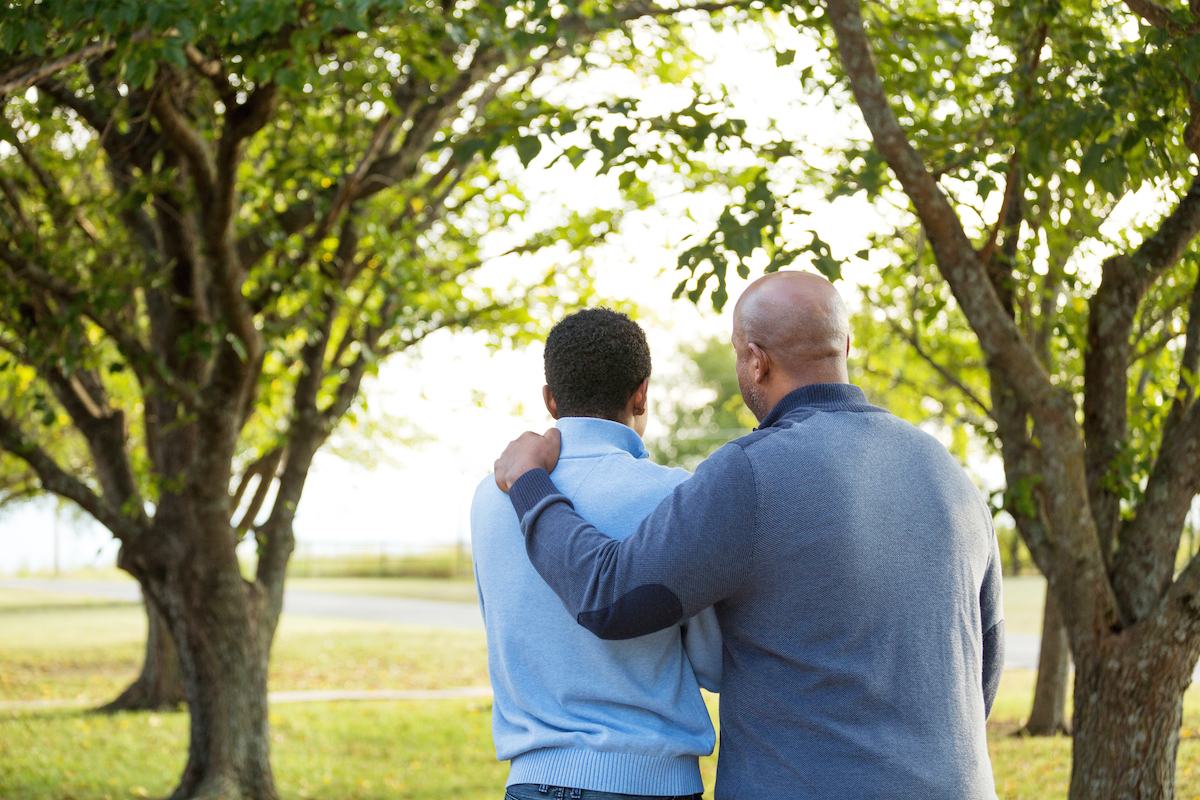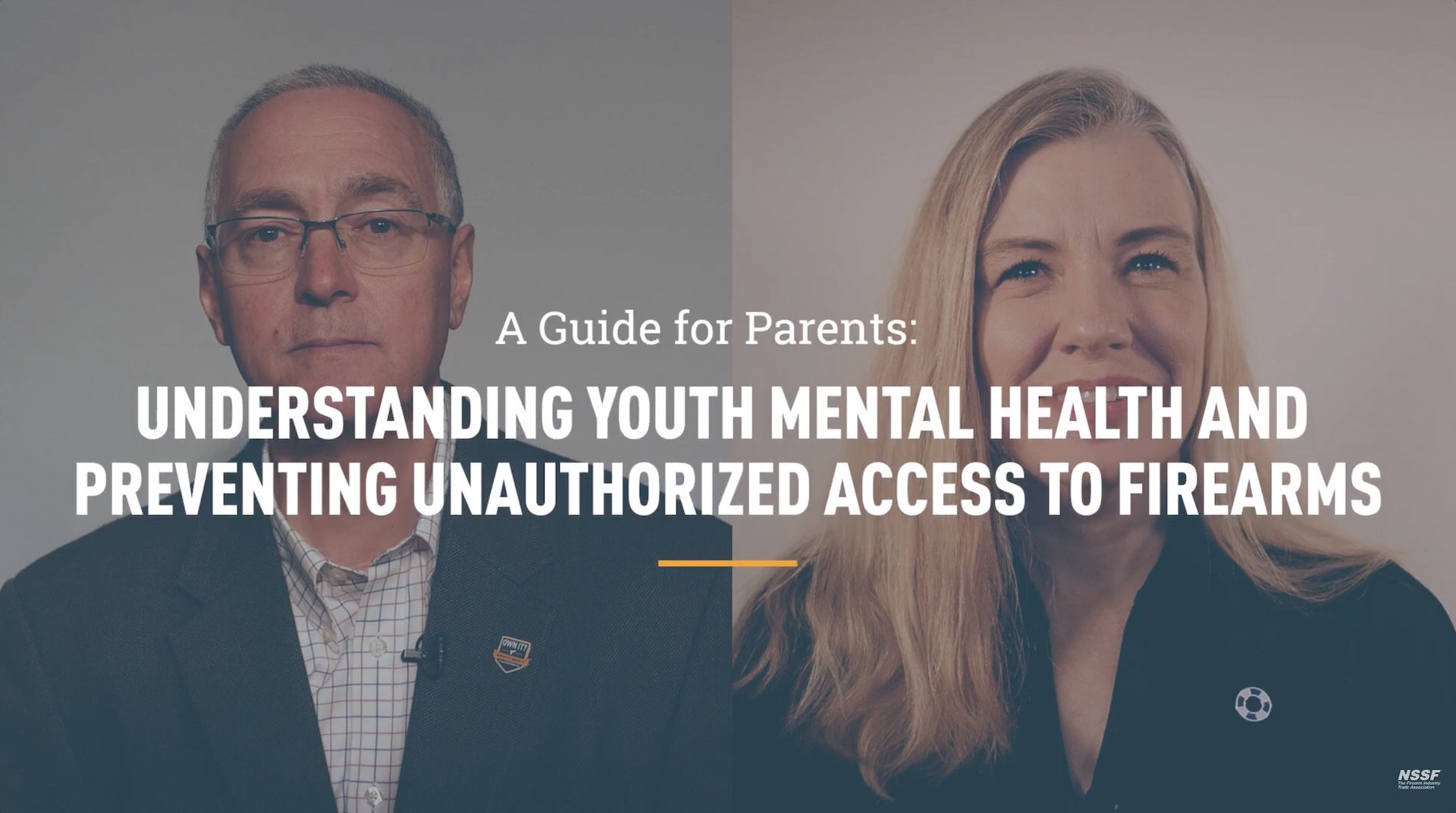Explaining Gun Safety to Kids
Discussing Mental Health
Project ChildSafe partnered with the American Foundation for Suicide Prevention to develop resources to address suicide and firearm safety. Talking with young people about mental health can help protect our kids and give them the support they need, long before a crisis.

As a parent, you can approach mental health care and suicide prevention in the same way you do other health and safety issues with your children. By educating yourself, you can learn what you can do in times of need to protect them.
Talking with young people about mental health can help protect our kids and give them the support they need, and does not increase risk. Mental health experts agree that bringing up the conversation doesn’t spark the idea of suicide, but relieves those struggling with the notion.
Simultaneously, being aware of what “lethal means” are in your home (anything such as medications, firearms, sharp objects, etc.) and how to prevent unauthorized access to them, can mean the difference between a life saved and a tragedy.
Remember: safely storing firearms is the number one way to help prevent misuse of firearms, including suicide.
Understanding Youth Mental Health and Preventing Unauthorized Access to Firearms
Project ChildSafe partnered with the American Foundation for Suicide Prevention to develop a comprehensive guide for parents or caregivers to help you start a conversation about health with your family. Checking in on your child’s mental health and asking the right questions—in the right way—is an important starting place.

A Parents Guide to Understanding Youth Mental Health and Preventing Unauthorized Access to Firearms
Play VideoEXPLORE THE FULL PARENT’S GUIDE
In the guide, you’ll learn how to:
- Identify the warning signs that indicate their teen may be struggling with their mental health and/or having suicidal thoughts.
- Understand how to respond (vs. react) to these warning signs
- Create a safe environment that prevents access to lethal means
The Centers for Disease Control and Prevention (CDC) report that almost one in three American high school girls have considered suicide—and more than 40% of teens are persistently sad or hopeless (2021).
Understanding Adolescent Mental Health, Suicide and Risk Factors
Just as we all have physical health, which can vary from day-to-day, we also have mental health, and it’s just as important to be cared for and looked after. Mental health isn’t stagnant – the internal and external factors that contribute to our mental health are always in flux. However, ongoing stressors can harm mental health. Someone with mental health challenges that become exacerbated or go untreated may consider suicide or harming others.
Parents play a critical role in helping identify changes in their teen’s mood or behavior and can help support their children by having more regular conversations about mental health, and seeking help should struggles turn into a crisis. Suicide is complex and is never the result of just one cause. Parents who understand and recognize warning signs—as early as possible—can step in to safeguard their child’s mental health and seek outside help if needed.
The first step for parents concerned that their teen may be contemplating suicide or harming themselves is to examine risk factors, which fall into three areas:
It’s important to know that suicide is never the result of one risk factor, but instead the convergence of several life stressors.
Mental health experts also agree that one of the most effective ways to reduce suicide is preventing access to methods of harming oneself. While there are several commonly used lethal means, firearms were used in 51 percent of all suicides among Americans in 2018. Understanding the warning signs and proactively preventing unauthorized access to firearms and other means by those at risk can help reduce harmful behaviors.
Suicide is complicated and tragic, but it’s also preventable—and secure firearm storage is an important part of suicide prevention. This is especially true for teens, whose access to lethal means typically comes by way of their own homes. Practicing safe firearm storage and curtailing access for at-risk individuals can make the difference in the life of a teen contemplating self harm.
When and How to Take Action
Once a parent recognizes or even begins to suspect signs of suicide risks in his or her teen, the most important first step is to reach out and talk with your young person. If you suspect your teen is in crisis or faces an imminent risk, the best thing to do is to contact a crisis outreach center immediately.
- Don’t wait—trust your gut. If you notice changes in your teen’s normal behavior, such as becoming more withdrawn, disconnecting from friends, or seeing their grades drop, or they’re just not being themselves, that’s a time to connect and talk with them about their feelings and mental health and consider reaching out to a healthcare professional. Talking about mental health or suicide does not increase risk.
- Ask your teen specifically about suicide and suicidal thoughts. Here’s how: “Sometimes when people are feeling overwhelmed, they may have thoughts of suicide. Have you had those kinds of thoughts?” If your teen indicates suicidal thoughts or you are left feeling uneasy, reach out to a healthcare professional for further assessment.
- Hold all discussions in a nonjudgmental, empathetic manner. Listening and conveying that you are here to help is more important than giving advice. Stay in regular touch with teachers and coaches, as well as your teen’s friends and teammates.
- Follow up regularly and express your care and concern. If you don’t see any improvements or your child continues to struggle, seek help.
- Contact a healthcare professional. While a mental health professional is ideal, you can also turn to your child’s primary care physician or even a walk-in clinic, urgent care center or your local emergency room if you are concerned about your child’s safety.
- Secure your firearms, medicines and harmful chemicals and ensure that all family members who have access to them know the procedures to keep them secure. This means not having firearms, ammunition, lock keys and other methods of security accessible to the person who is distressed.
Parents Guide Webinar

Suicide Prevention Webinar
Suicide is a leading cause of death, and it’s preventable. Learn the risk factors and warning signs of suicide.
Play Video